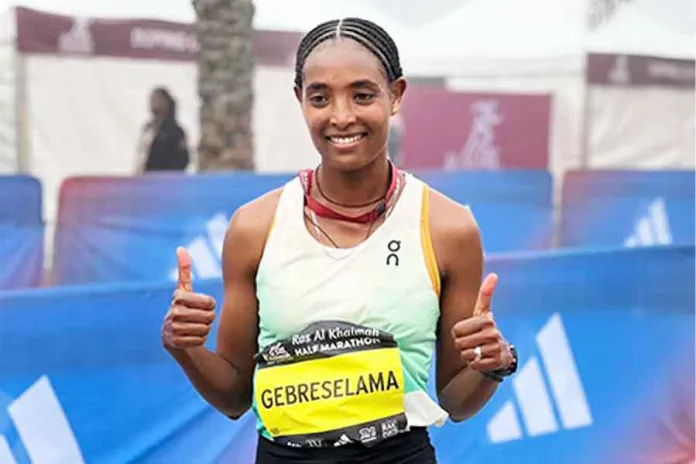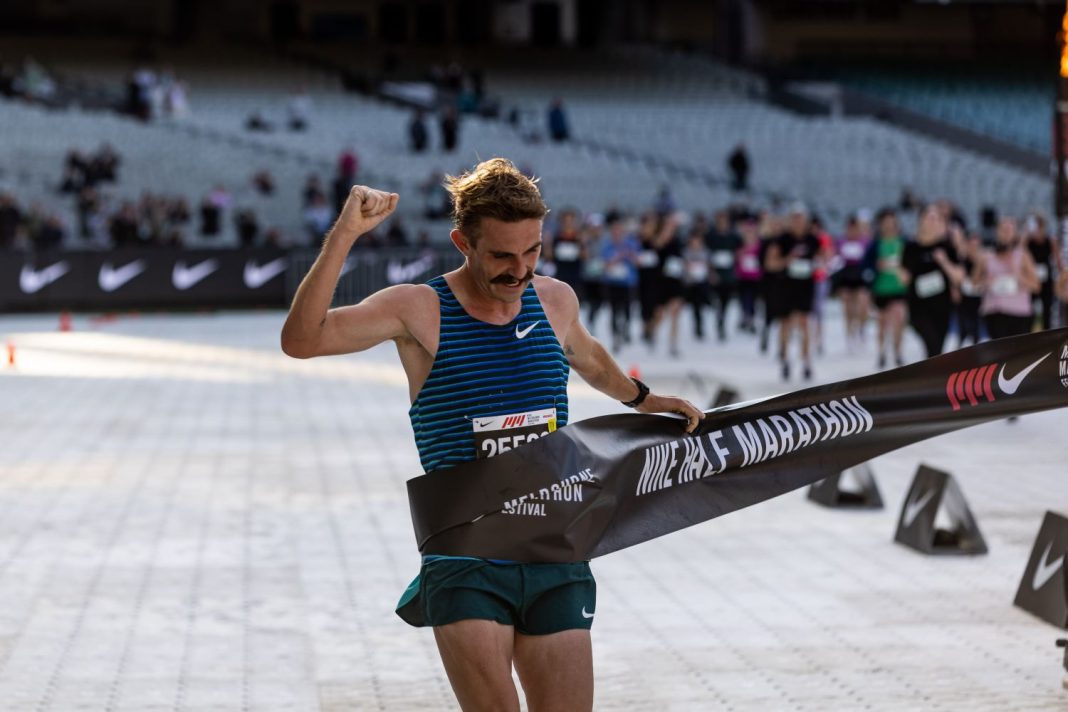As the results of the men’s race at The Ten came in last Sunday afternoon (Saturday evening, California time) I couldn’t help thinking about peak-hour trains.
View this post on Instagram
The women’s race had barely sunk in – a sub-30 from Ethiopia’s world cross-country silver medallist Tsigie Gebreselama, 30:35.66 from Lauren Ryan in third place, breaking Benita Willis’s Australian record set way back in the 2003 world championships – when eight men came in under 27 minutes in the men’s with another five, including Jack Rayner in another AR 27:09.57, between 27:07 and 27:10.

Or, if you prefer, like an onrushing train. Not your stopping-all-stations type either, but a crowded peak-hour express. And with just over five-and-a-half seconds covering the sub-27 group, it was packed. You could almost hear the conductor announcing: “Move on down the carriage, please, so others can board.”
After 12 men finished between 3:30.44 and 3:31.82 in the 1500 metres at London’s Diamond League last year, I wondered whether middle-distance running at peak levels was becoming a matter of boarding a train and hanging on tight until you reached the destination.
To a greater or lesser extent that sort of result has been common through much of middle-distance history. But eight men within 50 metres after 25 laps? Another five entering the finishing straight? Thirteen more under 28 minutes – which used to be the barrier separating the world-class distance runner from those merely very good: that sort of crowding in a distance race is rare indeed.
Yes, the shoes. Yes again, pacing lights. But the key to these super-fast results may be found in the 27-minute mark broken by the first eight finishers. That’s the time set by World Athletics as the automatic qualifying performance for the Paris Olympics and, by extension, by the organisers of The Ten. Victory and achieving the standard were equal priorities. Hence a large group together all the way through the race and no real racing until the last two laps. The first eight finishers were the strongest of a bigger group which had run 64-65 seconds per 400 right from the start.
We had better get used to this style of track distance running. Qualifying standards keep getting tougher in line with the target field sizes set by World Athletics and the general aim that half the field will come from automatic qualifiers and the rest from the next best in the world rankings. It’s a vicious circle which will see more of the world’s distance runners compete in domestic races to satisfy whatever criteria their national federation sets for selection and then chases entry in a race such as The Ten to achieve the standard or improve their ranking.
That was the formula successfully followed by Lauren Ryan and Jack Rayner, winners of the 2023 Zatopek races. Ryan is now safe within the women’s field (and, assumedly, cannot be dislodged even if more than the target number of 27 achieve the auto Q); Rayner, though he improved his position significantly, is just outside both the auto Q and the top 27 by ranking.
More broadly, fast times en masse are a rarity in the track 10,000. Historically, most world records are set by a runner ‘having a crack’ in either a domestic field or one in which they are the one being set up to attack the record. Either way, they tend not to be populated by opponents who might spoil the occasion by winning.
Then there’s championship races, where the priority tends to be medals first, times a secondary consideration. There are exceptions to this model, such as Almaz Ayana’s world record in the women’s 10,000 at the morning session of the first day of athletics at the Rio 2016 Olympic Games. Or Lasse Viren’s world record in the men’s race at the Munich 1972 Games.
The heightened intensity of major championships can also produce exciting racing even if times are moderate. Alberto Cova won the men’s 10,000 at the inaugural world championships in Helsinki in 1983. The first five ran 28:01, Cova winning in 28:01.04 from Werner Schildhauer (28:01.18) and Hans-jorg Kunze (28:01.26). Martti Vainio was next (28:01.37) and Gidamis Shahanga fifth (28:01.93). Four more men were inside 28:10.
Good as The Ten was, it isn’t the deepest field of sub-27 finishers. That distinction – as far as I can find – goes to the Prefontaine Classic 10,000 in 2011 in which Mo Farah’s 26:46.57 led home a total of nine sub-27 performances.
At men’s championship level, the London 2017 final – Mo again – featured seven men under 27 and Doha 2019 – won by Joshua Cheptegei – had six.
In the considerably shorter history of women’s track distances the Berlin 2009 final is one to stand out. Kenya’s Linet Masai won in 30:51.24 as just 1.13 seconds covered the first five finishers.
Finally, with the men’s world record now standing to Cheptegei at 26:11.00, it is a sobering thought that Grant Fisher’s winning 26:52.04 last weekend is not a personal best (he ran 26:33.84 in the 2022 version of The Ten), nor any better than moderate overall. If my fallible counting is correct, there has been a total of 36 faster winning times.

One of the things I love about the 10,000 metres is that it gives participants time to think within the race and the rest of us plenty to ponder between races.
Actually, that’s two things. See what I mean?

